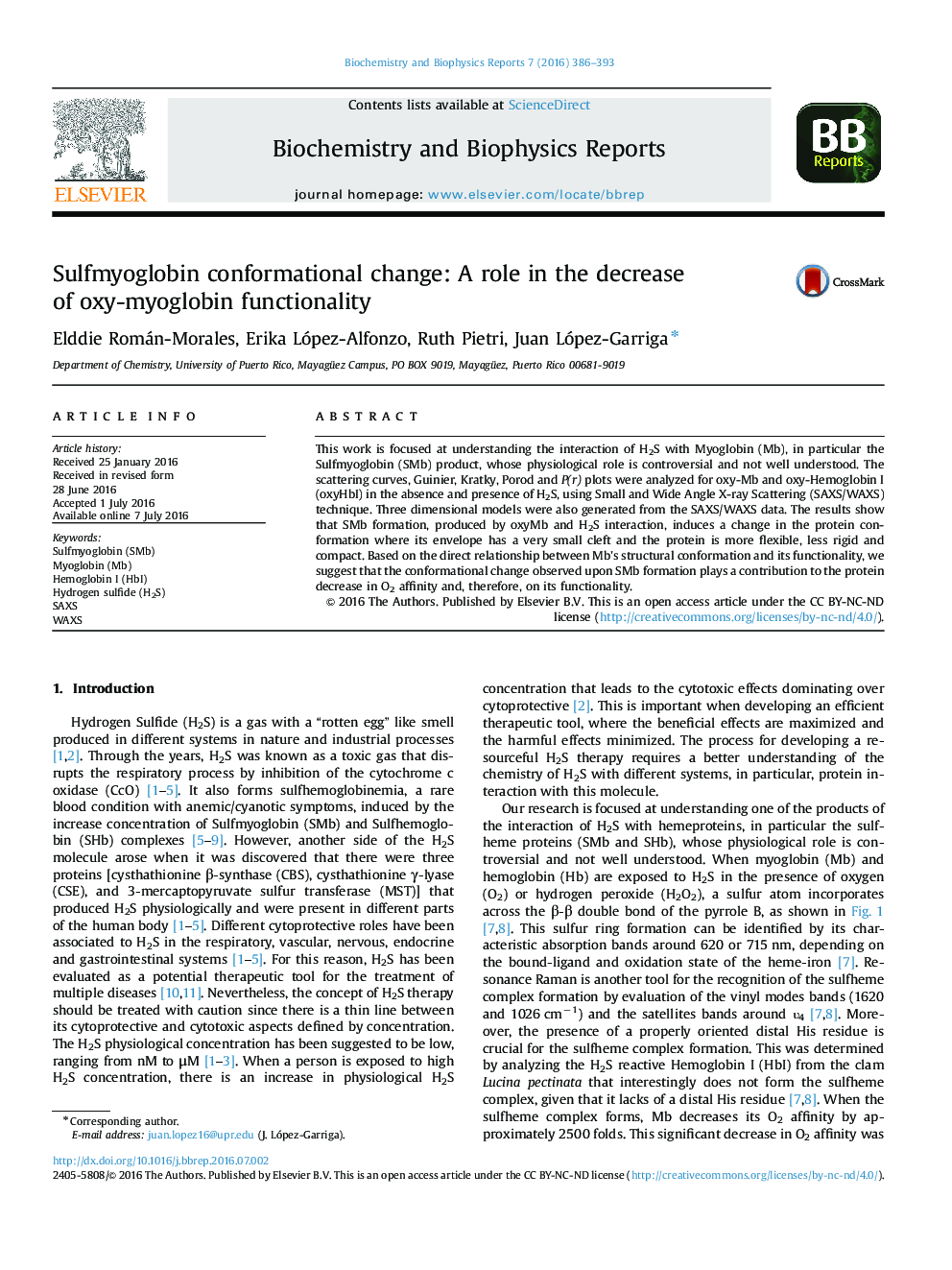| Article ID | Journal | Published Year | Pages | File Type |
|---|---|---|---|---|
| 1941647 | Biochemistry and Biophysics Reports | 2016 | 8 Pages |
•SMb formation induces conformational change where its envelope forms a small cleft.•There is an increase in fluctuation/flexibility, decreasing rigidity/compactness.•These changes contribute to a decrease in O2 affinity and Mb functionality.•The internal structural fluctuations are not observed in the crystal structure.•Crystal packing forces hampered the internal structural fluctuation in solution.
This work is focused at understanding the interaction of H2S with Myoglobin (Mb), in particular the Sulfmyoglobin (SMb) product, whose physiological role is controversial and not well understood. The scattering curves, Guinier, Kratky, Porod and P(r) plots were analyzed for oxy-Mb and oxy-Hemoglobin I (oxyHbI) in the absence and presence of H2S, using Small and Wide Angle X-ray Scattering (SAXS/WAXS) technique. Three dimensional models were also generated from the SAXS/WAXS data. The results show that SMb formation, produced by oxyMb and H2S interaction, induces a change in the protein conformation where its envelope has a very small cleft and the protein is more flexible, less rigid and compact. Based on the direct relationship between Mb's structural conformation and its functionality, we suggest that the conformational change observed upon SMb formation plays a contribution to the protein decrease in O2 affinity and, therefore, on its functionality.
Graphical abstractFigure optionsDownload full-size imageDownload as PowerPoint slide
